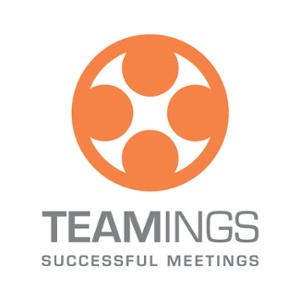According to Wolf Management Consultants, LLC a whopping 91% of professionals admit to daydreaming during meetings. 73% percent go as far as working on other projects during meetings. You can easily imagine how these percentages can increase on conference calls – where employees are hidden from view, sitting at their desks with e-mails dinging in their ears.
What would happen if your conference calls were more productive? Would it increase sales? Would your team come up with the next innovative idea and impress the higher-ups? If you want your conference calls or audio meetings to be successful, you need to engage your audience. Help them stay on task by retaining their attention. Here are some helpful tips for increasing meeting engagement during conference calls from Teamings. How to increase engagement over the phone. The first step to ensuring engagement is to set an objective for your call. It’s hard to pay attention in a meeting without purpose or structure. Think about the purpose of your audio conference. What objective do you want accomplished? Here are some examples. Write this objective down. Think about how you can meet the objective during the upcoming conference call. Who you need to attend your meeting, what resources do you require, what is your timeline, ect. Review this objective before, during and after your meeting to increase the likelihood of meeting it. Is an audio conference really the best option for your objective? Do you have visuals that can better communicate your point? Maybe a Web Conference is better. If your objective is to update your team on new information, perhaps an e-mail or memo will best serve your needs and you can avoid an unnecessary conference call. Take a few moments to prepare for your meeting. Using your objective as a guide, write out your meeting agenda and expectations. Send this to your attendees. Within your meeting agenda, state your meeting objective. Then, expressly layout exactly what you expect from your meeting attendees. List any materials they need to review before the meeting. Let them know they should be prepared to discuss and offer suggestions. Request that all other communication (e-mails, phone calls, private discussions, etc) be put off until after the conference call. This provides an upfront contract. Attendees know what is expected of them and therefore are less likely to attempt multi-tasking. Next, lay out your meeting agenda. You’ll want to list the topics, action items and the owner of each topic. It also might be helpful to outline your schedule so everyone knows how long each topic should take. At the beginning of your conference call, state your objective, agenda and basic etiquette. As you go through your presentation, call on random meeting attendees with engaging questions. These questions can request input or be designed to reiterate your point. The goal is to keep your attendees on their toes. No one is going to risk the embarrassment that comes with not being prepared in the spotlight. If your meeting takes you through several topics, you’ll want to make sure everyone is ready to move on before doing so. You don’t want to leave great ideas on the table! Ask for last comments on each subject as your transition to the next topic. If the feedback is likely to insight discussion you do not have time for, make a note of it and revisit the topic at a later time. You can say something like, “That’s a great insight Kelly. Unfortunately, we don’t have time to discuss it here. Please send me an email and we’ll discuss later.” Your teleconferencing service probably offers special services that can help your engagement. An operator could monitor your call for unwanted background noise. Some services, like Teamings, can even provide a moderator or other meeting optimization services to ensure your meeting stays on track. At the end of your meeting, restate your objective. Ask someone to summarize what you’ve been discussing and ask if there are any questions. Next, perform a “roll call,” calling each person by name and asking them what their next actions will be and when the team can expect the final result. Distribute meeting minutes as promptly as possible. Remind everyone of their action items and issues discussed. Don’t lead unproductive meetings! Follow these tips to increase productivity during conference calls and impress your boss. For more meeting tips, tricks and insights, sign up for the Teamings newsletter.
When people aren’t engaged, they’ll find something else to do.
 Professionals lose 31 hours per month to unproductive meetings.
Professionals lose 31 hours per month to unproductive meetings.Set an objective
Consider all your meeting options
Share your objective, agenda and upfront contract
Ask for input
Don’t be too quick to transition
Take advantage of services
Revisit your objective and review action items
Follow up

